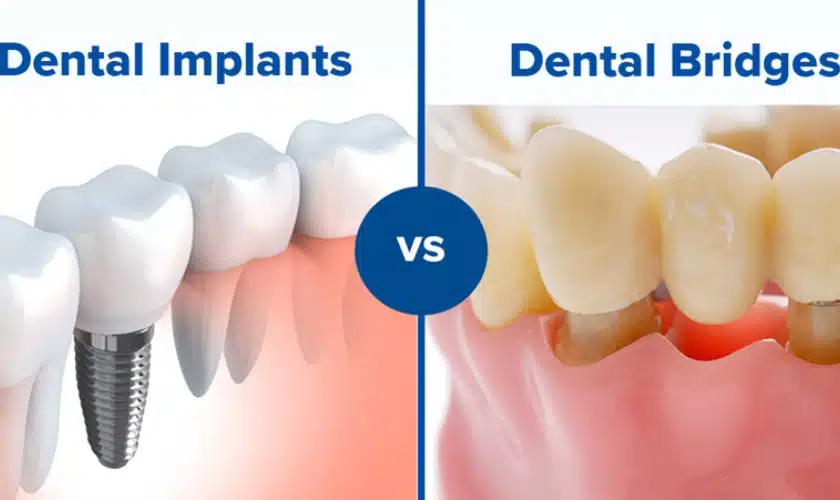Dental Sense - Truths
The Ultimate Guide To Dental Sense
Table of ContentsGetting The Dental Sense To WorkIndicators on Dental Sense You Should KnowDental Sense Can Be Fun For AnyoneDental Sense Can Be Fun For Everyone
are clinical devices operatively dental implanted right into the jaw to recover a person's capacity to eat or their appearance. They supply support for synthetic (phony) teeth, such as crowns, bridges, or dentures. When a tooth is shed because of injury or condition, a person can experience issues such as rapid bone loss, faulty speech, or adjustments to chewing patterns that cause pain.Dental dental implant systems consist of an oral implant body and oral implant joint and may also include a joint addiction screw. Same day dental implants. The dental implant body is operatively put in the jawbone in place of the tooth's root. The dental implant joint is typically affixed to the implant body by the abutment fixation screw and prolongs with periodontals into the mouth to support the affixed artificial teeth
(https://www.domestika.org/en/dentalsense1)Framework of The Dental Implant System selecting dental implants, talk to your dental copyright concerning the possible advantages and risks, and whether you are a prospect for the treatment. Points to consider: Your total wellness is an important consider identifying whether you are a good prospect for oral implants, just how long it will certainly take to heal, and the length of time the dental implant might stay in location.
Smoking may affect the healing procedure and decrease the long-lasting success of the dental implant. The healing process for the implant body may take numerous months or longer, during which time you normally have a short-lived joint instead of the tooth. the oral implant treatment: Very carefully follow the dental hygiene guidelines offered to you by your oral provider.
Little Known Facts About Dental Sense.
Implant failure can cause the demand for another operation to deal with or replace the dental implant system. Recovers the ability to chew Restores cosmetic look Aids maintain the jawbone from diminishing due to bone loss Maintains the health of the surrounding bone and gums Helps maintain adjacent (neighboring) teeth stable Boosts quality of life Damage to bordering natural teeth throughout dental implant placement Injury to the surrounding cells throughout surgical treatment, such as sinus perforation Injury during surgical treatment (as an example, fracture of surrounding jawbone) Insufficient function, such as seeming like the teeth do not attack with each other normally A sensation that the tooth hangs or twisting in position arising from a joint screw loosening Implant body failing (looseness of the dental implant body) because of systemic infection, which might be most likely in individuals with unrestrained diabetes because of local infection in bone and gum tissues supporting the implant body as a result of postponed recovery, which might be more likely in patients who smoke Trouble cleaning the gums around the implant, resulting in poor oral hygiene Without treatment gum condition Post-surgical numbness due to nerve impingement or damages Constantly alert wellness care carriers and imaging technicians that you have oral implants prior to any type of magnetic resonance imaging (MRI) or x-ray procedures.
FDA is not familiar with any unfavorable occasions reported for MRI or x-ray treatments with oral implants. Oral implants systems are typically made of products that adhere to worldwide consensus standards of the International Organization for Standardization (ISO) or ASTM International. These criteria have information of what makes a secure material.

An oral implant is a structure that changes a missing out on tooth. With screw-like gadgets, the surgeon inserts a dental implant right into the jawbone, and it acts as an anchor for an artificial tooth, called a crown.
See This Report about Dental Sense
Some people are not eligible for dental implant surgical treatment. It is for dental doctors to run on individuals with: acute illnessuncontrollable metabolic diseasebone or soft tissue disease or infectionIf these issues are solved, an individual can have the surgery. In, dental cosmetic surgeons avoid operating on people with: If individuals with any one of the above undergo dental implant surgical treatment, there is a greater risk of the implant stopping working.

Dental implant surgical treatment is a tailored procedure. It's not the same for everybody. But the adhering to gives a general overview of what you can expect your dental professional, dental doctor, periodontist or prosthodontist to do: Place the dental implant operatively. Give you time to recover. Attach the article and final crown, bridge or denture.
Next, your surgeon will thoroughly position the dental implant right into your jaw. If your implant is near the front of your mouth, your dentist will make a momentary tooth for you to put on till you recover.
The Facts About Dental Sense Uncovered
Your supplier can tell you what to anticipate in your situation. Throughout the healing phase, your jawbone must fuse to the dental implant. This process, called osseointegration, is essential for stability and lasting success. This procedure can take anywhere from three to 9 months. In some situations, it might take longer.
As soon as your implant heals, your dentist can attach the abutment (little connector blog post) and your last repair (crown, bridge or denture). This generally takes regarding one hour to complete and might require a second small surgical treatment. You should not really feel any kind of pain during your dental implant procedure since your provider will make use of drug to numb your gums.